NVIDIA Announces SHIELD Console: Tegra X1 Android TV Box Shipping In May
by Ryan Smith on March 4, 2015 5:00 AM EST
Today NVIDIA has announced their latest addition to the SHIELD product family, the SHIELD Console. Launching in May at $199, the SHIELD Console is a combination microconsole and Android TV box, offering Android TV functionality along with two forms of gaming. The first form being Android gaming backed by the console’s Tegra X1 SoC, and the second form via access to NVIDIA’s GRID game streaming service.
Like NVIDIA’s previous SHIELD devices, the SHIELD Console is perhaps first and foremost their showcase device for their Tegra SoC. Having already built a gaming handheld (SHIELD Portable) for Tegra 4 and an 8” tablet (SHIELD Tablet) for Tegra K1, NVIDIA has moved on to the microconsole/set-top box market with the SHIELD Console. In doing so the company is forging a slightly different direction, skipping the mobility plays that were the previous devices and instead focusing on the TV and fixed-position gaming with the SHIELD Console.
| NVIDIA SHIELD Family | ||
| NVIDIA SHIELD Tablet | NVIDIA SHIELD Console | |
| SoC | Tegra K1 (2.2 GHz 4x Cortex A15r3, Kepler 1 SMX GPU) | Tegra X1 (4x Cortex A57, Maxwell 2 SMM GPU) |
| RAM/NAND | 2 GB DDR3L-1866, 16/32GB NAND + microSD | 3 GB RAM, 16GB NAND + microSD + USB |
| Display | 8” 1920x1200 IPS LCD | N/A, HDMI 2.0 4Kp60 Output |
| Dimensions | 221 x 126 x 9.2mm, 390 grams | 210 x 130 x 25mm, 654 grams |
| Camera | 5MP rear camera, 1.4 µm pixels, 1/4" CMOS size. 5MP FFC | N/A |
| Battery | 5197 mAh, 3.8V chemistry (19.75 Whr) | N/A, 40W Power Adapter |
| OS | Android 4.4.2 | Android TV |
| Connectivity | 2x2 802.11a/b/g/n + BT 4.0, USB2.0, GPS/GLONASS, mini HDMI 1.4a | 2x2 802.11a/b/g/n/ac + BT 4.1/BLE, USB 3.0 + 2.0, HDMI 2.0, IR Receiver, Gigabit Ethernet |
| Launch Price | $299 (16GB/WiFi) + $59 (optional controller) | $199, Includes 1 SHIELD Controller |
From a hardware perspective the SHIELD Console itself is built somewhere in between a microconsole and a full-blown console. The underlying SoC and the use of Android TV make it closer to a microconsole, while in terms of physical size and NVIDIA’s performance ambitions are closer to a console. In any case, anchored by the Tegra X1 SoC, the console also packs in 3GB of RAM, 16GB of NAND, 2x2 802.11ac wireless, and a large I/O collection, including USB 3.0, Gigabit Ethernet, and an HDMI 2.0 port.
On the software side, the SHIELD Console is running Android TV, Google’s TV-centric branch of the Android operating system. The use of Android TV gives the device the OS’s accompanying 10ft UI along with suitable access to media through the Google Play Store, giving NVIDIA the kind of wide access to media they need to help drive adoption of the console. For more local tastes, local media playback will also be supported through the included PLEX application. Meanwhile because of its Tegra X1 backing, the console will be the first Android TV device to support 4K playback, capable of decoding and displaying 4Kp60 content, including up-and-coming HEVC content.
NVIDIA’s second pillar for the device – and arguably the device’s primary purpose – is local gameplay through the console’s ability to run Android games. Games will be sold through a SHIELD Store, similar to how SHIELD Portable/Tablet users can currently buy Android games through NVIDIA’s application. Meanwhile the powerful Maxwell GPU backing the Tegra X1 should prove to be very capable at driving these games.
From a performance perspective NVIDIA is targeting performance ahead of the Xbox 360, while many of the console’s marquee games are from that console generation. With Xbox 360 turning 10 this year, this is roughly in-line with the tendency for SoC/mobile devices to trail PCs (and high performance consoles) in performance by about a decade.
The games we’ve seen in the store so far are frequently ports of last-generation (or older) console games, with NVIDIA including a mix of existing ports along with partnering for new ones. Upcoming ports include the releases of games such as Borderlands: The Pre-Sequel and Crysis 3 (yes, Crysis) for SHIELD. Right now NVIDIA is very keen to show off the SHIELD console’s ability to perform similarly to the last-gen consoles, given that they were very popular devices with similarly long shelf lives.
Given NVIDIA’s hardware background and the capabilities of the Tegra X1 SoC, this makes a lot of sense for the company in the short run. However in the long run it will be interesting to see whether the service sees very many “new” or recent AAA games, as game development for the last-gen consoles winds down. Meanwhile original Android games are also on the store, though from NVIDIA’s standpoint these must be difficult to count on as Android native games rarely push the envelope graphically and have a high tendency to be free-to-play games, the antithesis to the AAA console game market NVIDIA is chasing down.
Ultimately however NVIDIA can’t rely on native Android games and ports of older games alone to move their console, and for that reason the final pillar of the device is based around the GRID game streaming service. Currently in beta for NVIDIA’s existing SHIELD devices and scheduled to go commercial alongside the release of the SHIELD console, the GRID streaming service will plug the remaining game gap by giving SHIELD console owners access to newer PC games that are streamed to the console rather than run locally.
The GRID service has and continues to be ambitious; NVIDIA’s GRID server cards actually make the execution model pretty simple, however whether consumers are willing to put up with the latency and reduced image quality is a question that hasn’t been adequately answered so far. NVIDIA’s GRID service has seen quite a bit of activity with its current beta, though that is for a free service. The addition of a price tag – either for subscriptions for older games or buying the newest games individually at full price – may change this dynamic. However the alternative of not having the ability to run recent AAA PC games at all would have made the SHIELD Console a much harder sale.
For their part, NVIDIA has laid down the groundwork for the service in developing the technology and ramping up servers, and now they are working on bringing developers on-board. Essentially any game that can work on a PC with a game controller can in theory be offered via GRID, though so far the game selection has been very Steam-centric. For the console’s launch, Capcom, Konami, and CD Projekt Red were all brought on stage to showcase some of their games running via GRID. NVIDIA ultimately expects to have 50+ titles available on the service by the time it and the SHIELD Console launch in May.
As for users looking for game streaming on a more local level, NVIDIA has confirmed that the SHIELD Console will also support the company’s GameStream technology, which allows for games to be streamed from a suitably equipped GeForce PC. Also present in the specification sheets is “NVIDIA Share”, which is NVIDIA’s name for their ability to broadcast gameplay via Twitch.
Moving on, the base package will come with the console and a SHIELD Controller for $199. NVIDIA previously launched the SHIELD Controller for the SHIELD Tablet last year, and thankfully unlike the tablet the controller is a standard part of the package for the console. However NVIDIA has also put together a second controller for the console that will be sold as an accessory, and that is the SHIELD Remote. Unlike the Controller, the Remote is geared towards taking advantage of the console’s media capabilities, particularly Google’s voice search capabilities. The remote itself contains only a few buttons, with voice intended to be its primary means of control. The remote also contains a headphone jack for local audio playback, and though not announced by NVIDIA at the time, as a Bluetooth device it will also work with the SHIELD Tablet and SHIELD Portable.
Wrapping things up, while we had been expecting a microconsole from NVIDIA going into their GDC presentation, the fact that they are so heavily backing it has come as a bit of a surprise. The microconsole market has been fairly treacherous so far – one only needs to look at the Tegra 3 based Ouya to see that first-hand – which makes NVIDIA’s “premium” positioning so unusual. Microconsoles have typically been sub-$100 devices, whereas at $199 this is more than half-way to a full console.
For the moment at least from a hardware perspective NVIDIA has put together a solid piece of kit, something that has been a recent strength for the company. As far as Tegra launch vehicles go the SHIELD products have always been flashy and powerful, and the SHIELD Console is no exception. What remains to be seen then is whether the market is ready to embrace NVIDIA’s vision of 4K media, game ports, and game streaming on a $199 console.


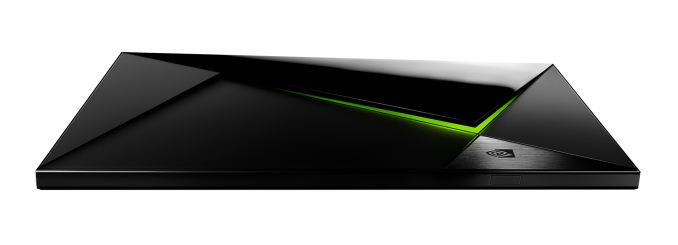

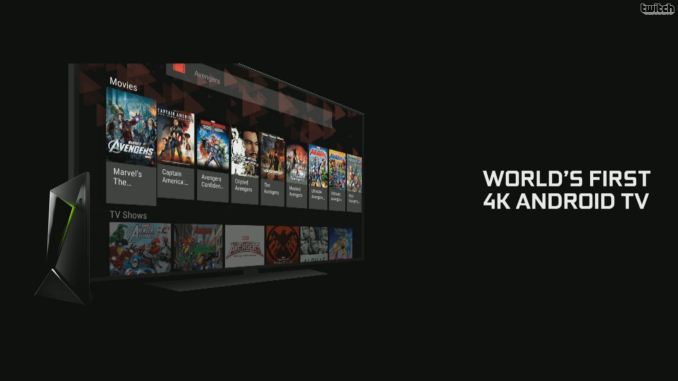

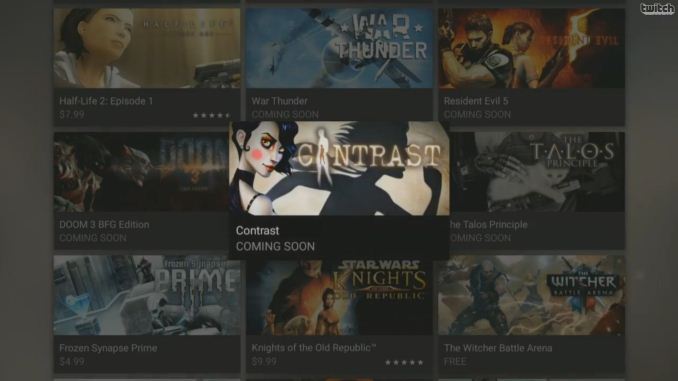
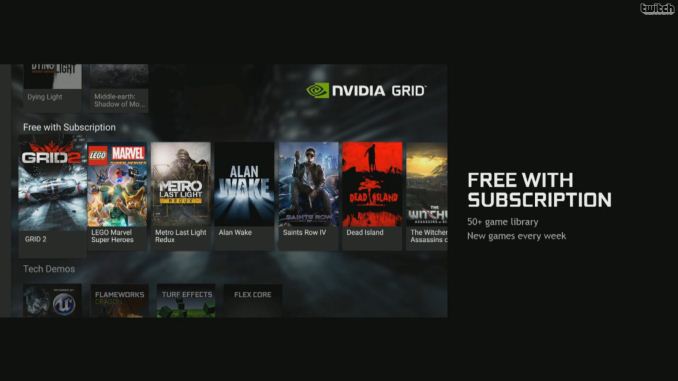
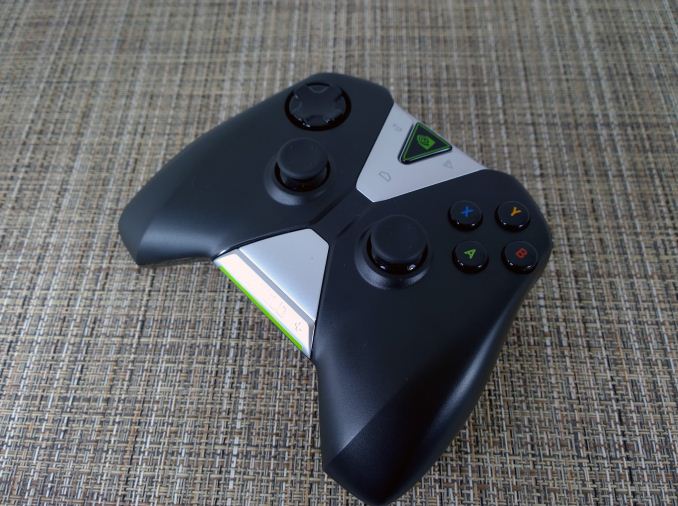
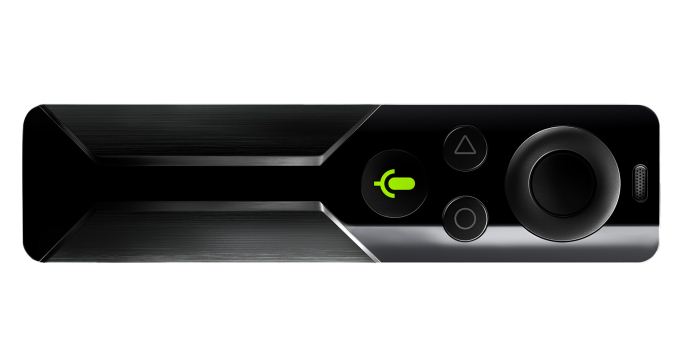









64 Comments
View All Comments
nikaldro - Wednesday, March 4, 2015 - link
1080p sure, but at wich detail settings? You could go with a 50$ pentium and a gtx 750, a 30$ mobo, 4GB of ram, a cheap case+psu combo and your own old hdd for even less than 300$, but the sacrifices you'd have to make just aren't worth the saved money IMO. If you wanna do it, do it for good. If you just wanna casually play games sometimes, that's what the ps4 is made for.nikaldro - Wednesday, March 4, 2015 - link
Just watched it and yeah, he somehow got a 290, but it was coupled with a dinosaur old dual core cpu (i don't even know how that cripple's architecture is called, guess i'm too young), wich severely bottlenecked it. I guess a gtx 960 + pentium g3220 would beat it, for 250$ NEW. A used g3220 would cost less than spit, and just wait a couple of months and the 960's price will fall through the floor to compete with AMD's new gpus.Honestly, i'm not impressed. I believe i could do better myself if i could buy used parts too.
SunnyNW - Wednesday, March 4, 2015 - link
Doesn't the X1 have 4 A53 cores as well?Marc GP - Wednesday, March 4, 2015 - link
It haves the typical big.LITTLE structure of 4 x Cortex-A53 + 4 x Cortex-A57http://arstechnica.com/gadgets/2015/01/nvidia-anno...
Jumangi - Wednesday, March 4, 2015 - link
I chuckle at how Nvidia keeps comparing their hardware to last gen consoles. Beating 8 and 9 year old tech is so impressive...Marc GP - Wednesday, March 4, 2015 - link
At a mobile thermal envelope IT IS impressive.Jumangi - Wednesday, March 4, 2015 - link
No its not, because its not at a mobile level. The Shield console uses a 40 watt adapter, that's not even remotely mobile levels. I own an Intel laptop that has a 35 watt adapter.lucam - Wednesday, March 4, 2015 - link
Very true and it doesnt have the battery too. So not sure how it can be considered mobile.SpartyOn - Wednesday, March 4, 2015 - link
I own an original Shield Portable and love it. Even if it didn't come with all the other features that are included, it's by far the best handheld emulator device on the market. I spend more time playing my old PS1, Genesis, and SNES games than anything else. Having a built-in controller device while sitting back on a lounger in the pool doing some retro gaming is boss.I have streamed games via the GRID service over wireless and I did not notice any discernible impact on my gameplay other than in twitchy racing games (45MB down/5MB up connection). For me, it simply worked great, and that was even on shitty single band wireless-N (I've since upgraded to dual AC). Having the console plugged into Ethernet should improve on that experience in terms of lag.
Local GameStream from the PC has had its ups and downs. It worked great for a long time and I used it to stream games like Deus Ex: HR, Skyrim, Kingdoms of Amalur, a few LEGO games, and The Witcher 2 without any issues from soon after it's launch to about October 2014. Some of the recent Geforce Experience PC updates (Nov. 2014-early Feb. 2015) broke a lot of functionality for me though and I was having connection issues, dropped signals, jerky streams, and just overall less performance. However, they seem to be working out the bugs that were introduced with subsequent releases and I have seen my performance improve to I think about where it was since the last release.
What disappoints me about this console is that, for the most part, my Shield Portable does all of these things already. If I want to stream GRID games or PC games via GameStream to my TV, I can hook it up via HDMI and use an XBOX wireless controller. Want to play Android games on the TV? Same thing. Bluetooth voice control accessories? Check. This new console just has more performance, which is to be expected for a larger and newly released device.
I was really hoping they were going to release an update to the handheld with the X1 and market it as a portable home console. Increase the screen size to at least 6" from the current 5", slap a high resolution screen in it, throw in the X1 with active cooling just like the original shield, put 3-4GB of RAM in and call it a day. All you would need to do to get all of the functionality of a home console would be to plug it in via HDMI if you just wanted to leave it on the shelf, but the portability factor would be there if you wanted it. The Shield Portable and Tablet were already niche products for a niche audience and instead of perfecting them, they've released this device that honestly, I don't know who it's for.
I mean, the X1 can probably handle PS2 games now as soon as someone releases a Android emulator. Wouldn't that be sweet to have in a handheld, plus all the benefits they are touting with the X1?
I'll pass on this console, thanks. Give us an updated portable already!
darkich - Wednesday, March 4, 2015 - link
Um.. You can already play many PS2, even PS3 and later PC gen games even on cheap midrange phones and tablets. GTA, Max Payne, Xcom, Half life, Star Wars TKOR, Bioshock and many many more.And many native Android games do offer classic "AAA" experience.
You just need to look and leave your prejudices behind.